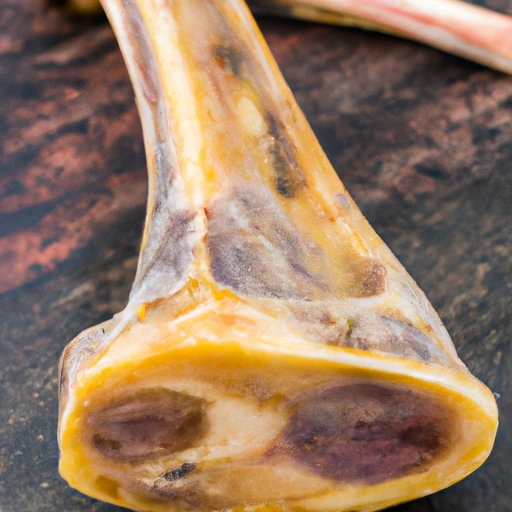Ham Bone
Description

A ham bone is the bone taken from a ham, which is the hind leg of a pig that has been preserved through salting, smoking, or wet curing. The bone itself is rich in marrow and collagen, which when cooked, imparts a deep, savory flavor and a luscious, silky texture to dishes. It is common in cuisines around the world and is particularly prized for its ability to add a complex, meaty flavor to broths, soups, and stews.
Common uses
Ham bones are often used to flavor soups, stews, broths, beans, and greens. They can also be used in making stocks or as a base for sauces. The smoked and salted qualities of the ham infuse the dish with a hearty taste that is both distinctive and comforting.
Nutritional value
Calories
As ham bones are used primarily for flavoring and are not typically consumed directly, their caloric content is not a major consideration in recipes. However, the marrow and collagen that leach into the cooking liquid do contribute some calories.
Protein
The broth created by simmering a ham bone will contain a small amount of protein from the marrow and bits of ham that remain attached to the bone.
Fat
While the bone itself does not contain a significant amount of fat, the marrow and any residual meat may add some fat to dishes. The exact amount will vary depending on the ham from which the bone was sourced.
Carbohydrates
Ham bones are naturally low in carbohydrates. The primary contribution to the dish will be via the flavor rather than carbohydrate content.
Vitamins
Any vitamins present in a ham bone broth are likely to be those that are soluble in fat, such as vitamins A and D, which might come from any residual meat or marrow.
Minerals
Ham bones are an excellent source of minerals such as calcium, phosphorus, and magnesium, which leach into broths and soups during the cooking process.
Health benefits
The collagen and gelatin released from ham bones during simmering can support joint health and improve the health of skin and hair. The minerals present in the broth, such as calcium and magnesium, are important for bone health and metabolic function.
Potential risks
As ham is a processed meat, the bone may contain high levels of sodium and nitrates, which, when consumed in large quantities, can be detrimental to health. Those on sodium-restricted diets should be cautious about the amount of ham bone broth they consume.
Common recipes
Ham bone is often featured in recipes for pea soup, bean soup, collard greens, and various types of slow-cooked stews and Southern dishes.
Cooking methods
The typical method for using a ham bone is to simmer it for an extended period, often several hours, to allow the flavors and nutrients to infuse into the cooking liquid. It can be done in a stockpot on the stove or in a slow cooker.
Pairing with other ingredients
Ham bone pairs well with legumes such as lentils, split peas, and navy beans, as well as with hearty vegetables like potatoes, carrots, and greens. Herbs and spices like bay leaves, thyme, and black pepper also complement the rich flavors of ham bone.
Summary
Providing a rich foundation for many dishes, the ham bone is a traditional ingredient that imparts depth and complexity to a variety of recipes. Its use across different cuisines reflects a long-standing appreciation for its flavor-enhancing properties. While ham bone itself is not a significant source of nutrients, the broth derived from it contains beneficial minerals and can contribute to overall health when consumed in moderation and as part of a balanced diet.